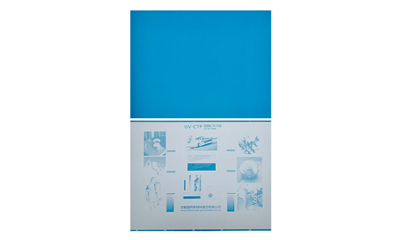Sep 29,2025
Many people in the printing industry—whether you’re a small shop owner or a large production manager—are confused about the key differences between thermal and UV plates. Both are common materials used in everyday printing, but understanding their respective characteristics can help you choose the right option for your project. This article will clearly examine their key differences, focusing on the practical factors that affect workflow and print quality.

Thermal plate uses heat to create images. It relies on a thermal laser, and the heat intensity must be precisely calibrated—too much or too little can ruin the layer reaction. When exposed, specific layers on the plate harden or break down to form the print pattern, so its imaging depends entirely on consistent temperature control.
UV plate uses ultraviolet (UV) light for imaging. Its photosensitive layer changes chemical structure the moment it’s hit by UV radiation, defining the print area. This light-driven reaction happens quickly, cutting down on wait time before moving to processing, and it never needs high heat.
Thermal plate needs strict temperature stability. Even minor shifts—like those from open windows or a faulty HVAC system—can disrupt its performance, leading to blurry prints or inconsistent color. It also requires specialized thermal imaging equipment that matches its heat requirements.
UV plate adapts easily to common workshop environments. It barely reacts to small temperature changes and works with standard UV imaging devices most shops already own. Plus, its base material boosts corrosion resistance, so it maintains performance in humid spaces or areas with occasional moisture.
Thermal plate excels at high-precision, large-batch printing. Its heat-based imaging keeps fine details sharp—think tiny text or intricate graphics—making it perfect for high-end brochures or long-run magazines where every copy needs to look identical.
UV plate is ideal for fast turnaround or versatile printing. It works great for flexible packaging, short-run flyers, or even prints on non-traditional substrates like thin films. Its quick imaging and broad substrate compatibility mean you can switch between projects without retooling.
Thermal plate needs a dedicated heating step post-imaging. You’ll first expose the plate, then use controlled heat to lock in the image—this prevents smudging during long runs—before moving to standard developing. The extra step adds a few minutes but boosts durability.
UV plate has a streamlined workflow. After UV light imaging, you can jump straight to developing with no extra heating. This reduces preparation time, which is a huge help for shops juggling multiple small orders each day.
Choosing between thermal plate and UV plate depends on your specific printing needs: thermal plate is the right pick if you prioritize high precision for large batches and can maintain stable temperature control, while UV plate is better suited if you need faster workflows, versatility across different substrates, or stronger adaptability to common workshop environments.
To find reliable thermal plate and UV plate options that match these industry traits, visit our product page. There, you’ll get detailed info on offerings designed to fit different printing volumes, substrate types, and quality goals.
GET A QUOTE